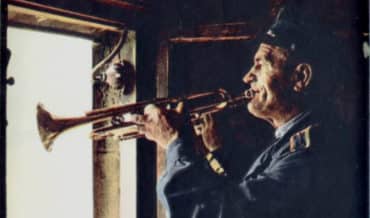Starting from 1257 cemeteries were located inside Krakow city walls and were connected to church parishes(St. Mary’s, St. Anna’s, All Saints etc.). To enter the church you usually had to walk through the cemetery that was surrounding the building. Those sentenced to death had to walk through the cemetery at St. Mary’s Basilica on their way to one of its chapels, where they were praying before the execution. At one of the entrances to St. Mary’s Basilica you can still see the chains which were used to punish cracovians for some smaller sins.
There was a certain hierarchy among the burial places. The necropolis at Wawel castle was obviously only for Polish kings and Wawel canons. Magnates were buried at the cemeteries of Dominican, Reformed Franciscan and St. Peter and Paul churches. Professors were buried in St. Anna’s, St. Michel’s and St. Florian churches, outstanding scientists and artists were buried in the crypt underneath the Pauline “Church on the Rock”. Criminals sentenced to death were buried outside the city walls as well as those who died because of the epidemics.
In 1784 during the Austrian occupation of Krakow was made a decision to liquidate the cemeteries located close to the churches inside the city walls.
The most important and known Christian cemeteries in Krakow are:
- Rakowicki cemetery
- Crypt at the Pauline “Church on the Rock”
- Salwator cemetery
- Cemetery at the church of St.Salvator
- Bielany cemetery
- Bieżanow cemetery
- Borek Fałęcki cemetery
- Łagiewniki cemetery
- Old Podgórze cemetery
- New Podgórze cemetery
- Reformed Franciscan Church cemetery
- Tyniec cemetery
